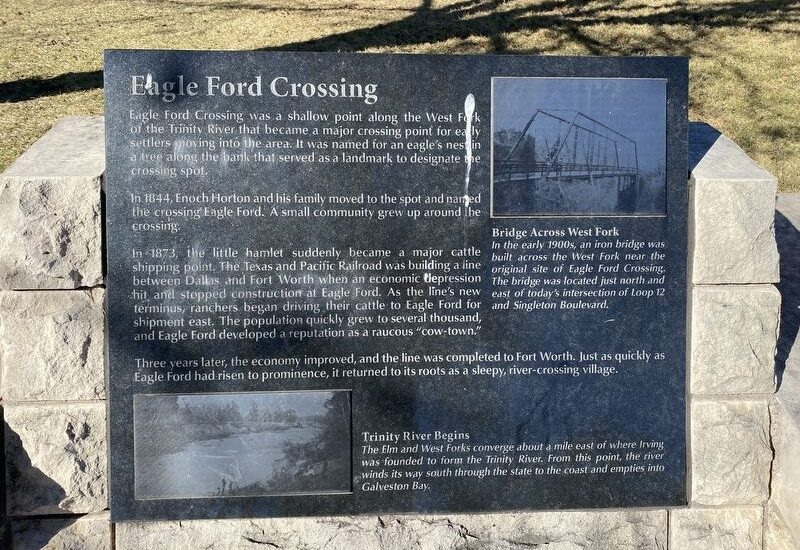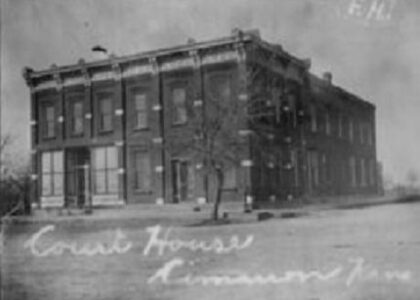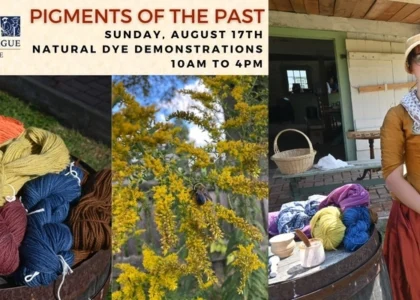Welcome to Eagle Ford: Early River Crossing, a location steeped in rich history and tales of the early pioneers who traversed this land. Situated near the coordinates 32.775383, -96.904400, this crossing point played a vital role in the development of the region.
Let us journey back to the early 19th century, a time when this area was a bustling hub for settlers and traders. Eagle Ford, named after the majestic birds that soared above, was one of the few viable river crossings in the area, making it a strategic point for those traveling westward.
In the early 1840s, the crossing became a key location during the Republic of Texas era. As settlers moved into the area, Eagle Ford served as a critical junction for trade and communication. The Trinity River, which the crossing spans, was both a lifeline and a barrier. The crossing facilitated the movement of goods, people, and ideas, contributing to the growth of nearby Dallas.
One notable figure associated with Eagle Ford is John Neely Bryan, the founder of Dallas. In the 1840s, Bryan recognized the potential of the area and established a trading post near the river crossing. His efforts laid the groundwork for the city of Dallas, which would grow into a major urban center.
As the years passed, the significance of Eagle Ford evolved. During the Civil War, the crossing was used by Confederate forces for the movement of troops and supplies. It was a place where soldiers would gather, share stories, and prepare for the trials ahead.
The late 19th and early 20th centuries saw Eagle Ford transition from a bustling crossing to a quieter community as railroads and bridges replaced the need for river crossings. However, the legacy of the crossing remains. It symbolizes the determination and resilience of those who ventured westward, seeking new opportunities.
Today, while the area has transformed, Eagle Ford: Early River Crossing stands as a testament to the history that shaped the region. It reminds us of the challenges faced by early settlers and the pivotal role of such locations in the broader narrative of Texas and American history.
As you stand here, imagine the sounds of wagon wheels, the calls of traders, and the rustle of the river—echoes of a bygone era that continue to inspire and captivate. Whether you’re driving by, walking, or exploring remotely, Eagle Ford invites you to reflect on the past and appreciate the enduring spirit of exploration and innovation.





